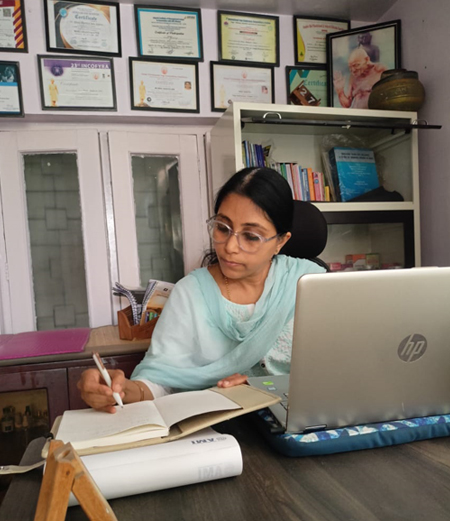Explore the ancient wisdom of Ayurveda, Yoga, Chakra Healing, and Astro Science with trusted guidance from Dr. Minal Bharatiya Jain in Indore.

Welcome to eDivine Souls, a Digital Gurukul rooted in the heart of Indore, where ancient healing meets modern wellness. We are dedicated to promoting holistic health through a carefully curated library of eBooks on Ayurveda, Yoga, Astro Science, Lifestyle Management, Chakra Meditation, and Human Anatomy.
Access curated eBooks on Ayurveda, Yoga, Astrology, and more.
Get personalized wellness advice from Dr. Minal Bharatiya Jain.
Integrate mind, body, and soul through natural therapies.
Explore energy balancing techniques for inner peace and clarity.


Dr. Minal Bharatiya Jain, the visionary behind eDivine Souls, is a renowned name in the field of holistic wellness and personalized healthcare.
With years of experience, she has guided countless individuals toward better health using natural and integrative methods.
She is especially known for her Migraine Consultation in Indore, helping clients manage chronic headaches with lasting, natural relief.
Her expertise lies in bridging modern understanding with ancient healing practices, offering solutions that are both time-tested and deeply personal.
At eDivine Souls, we blend ancient Indian wisdom with modern tools to guide your holistic wellness journey.

Get tailored guidance for issues like migraine, stress, and lifestyle disorders. Led by Dr. Minal Bharatiya Jain, trusted consultant in holistic care.
Explore eBooks on Ayurveda, Yoga, and Chakra healing from the comfort of your home. Perfect for self-learners, wellness seekers, and spiritual explorers.
Years Of Experience
Satisfied clients
Affiliations
Classes Conducted
"The chakra meditation techniques from eDivine Souls changed my life. Dr. Jain is not only a healer but also a guiding light!"
"I suffered from migraines for years. Dr. Jain’s personalized consultation brought me real, long-lasting relief. Forever grateful!"